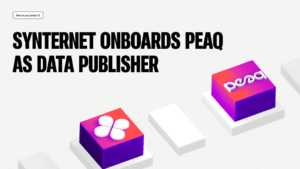How to Optimize The Costs of Data Streaming
Zero-code solutions for operating financial data are now trending in the financial world. They are cheaper than tech products from data giants like Bloomberg and Refinitiv and can be easily integrated into familiar software suites used for financial modeling or analysis. This makes no-code “add-ons” an ideal option for independent financial professionals and students.

Let’s have a closer look at the needs and problems of financial professionals with data.
Data is the new gold
According to Statista Digital, the world generates 2.5 quintillion bytes of data daily and market data takes up a significant share of this volume. Financial institutions rely on data for risk and customer management, establishing financial strategies, and predicting the behavior of various commodity and asset prices. NASDAQ estimates that corporate spending on big data and analytics is set to reach $274 billion by the end of 2022.
Financial institutions are among those who need to collect as much data as possible from various sources, such as stocks and ETFs, bonds data, financial statements and dividend information of global companies, indices and ETF, news, trading volumes, ESG, crypto etc. Accessing this precious global data is quite expensive. The biggest providers charge from $20,000 to $25,000 per year for using data flows. It is evident that such amounts can have quite an impact on the budget of a growing fintech or an independent wealth management consultant.
Integration is a problem
Paying for access to data streaming is not enough for obtaining a finalized financial product like a market forecast or a trading strategy. One of the top managers of a wealth management company in Switzerland assumes that they face serious challenges during the integration process, which cannot be solved without a qualified IT team. Basically, it happens because the software is quite rigid and customized in different institutions, so the IT support department is required to have very specific knowledge. But having one full-time IT support engineer can cost a company as much as $200,000 a year.
Last but not least, many organizations still initially collect data manually in Excel spreadsheets and later transfer them to digital systems. Manual analysis of financial data takes months of man-hours, and the results may not be as accurate as opposed to using an automated computing system. Those who can afford expensive solutions have to deal with multiple data providers and receive the flows as they are, in an inaccurate or raw format.
Raw data has to be compiled into sorted blocks, which are later dissected and drilled for useful information. The process is often lengthy and requires the involvement of multiple experts and specialists, each with their own skills and experience. One way of slashing analysis times is using machine-learning algorithms, which react to specific segments of code or data, and thus automatically parse data.
Enter Low-Code
The solution can be found in the rapid adoption of low-code and no-code solutions, which have become a revolutionary development for the financial sector because of their accessible pricing. Monthly subscription costs start at $20 per month, which is a tenfold decrease compared to the prices of the solutions offered by global giants.
By using low-code data streams, fintechs, small and medium businesses have the possibility of setting up their own applications, programs and platforms by combining the available skills of employees with convenient digital constructors. Ultimately, this has a positive impact on the marketing aspect.
Modern no-code and low-code solutions are straightforward enough to be seamlessly integrated into such popular instruments as Microsoft Excel and Google.Docs, allowing users to obtain ready-made data tables and create financial models within minutes. Other convenient connections available in such solutions include the Power Bi Connector for Financial Data APIs, Google Sheets Financial Data Integrations, MatLab connector API, and many others. Integrating existing software suites with no-code and low-code solutions negates the need for specialized application development and onboards company employees into the process instead.
The ability to bypass the need to attract an external developer for a lengthy production in the strive to create an application for financial analysis or other business needs is an arduous task. The low-code and no-code solutions offered by companies like Unicorn Data Services allow enterprises to slash such development times by up to tenfold. The experience of employees and the feedback from various interconnected departments allows low-code and no-code solutions to be developed in-house and tailored specifically to the needs of the business.
Key Takeaways
Financial institutions are facing a snowballing amount of data that is becoming increasingly complex and demanding in light of rapidly changing market conditions and price dynamics. The need for more efficient data mining and analysis has led to the development of such no-code solutions as those from Unicorn Data Services. With line employees being able to build their own applications using no-code, without the need for programming, any workstation in a bank branch can become an analysis hotspot. Such solutions are the future of financial discovery and operational workflows.

Denis has over 15 years of experience of product management in financial institutions and fintech-startups including blockchain platforms. Currently holds the role of the CEO of Unicorn Data Solutions, a financial data streaming provider that offers historical data over various types of asset classes such as stocks, ETF, bonds, mutual funds and cryptocurrencies as well as economic metrics and technical indicators. For more information, visit his Linkedin.









